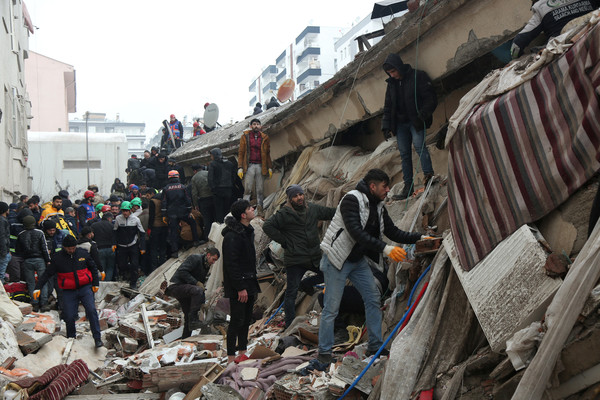
In the early hours of February 6, a magnitude 7.8 earthquake hit southeastern Türkiye and parts of Syria, followed by a magnitude 7.5 event nine hours later, as well as more than 200 aftershocks. The earthquake occurred in densely populated areas, with many buildings lacking proper reinforcement to withstand seismic activity. This, coupled with poor emergency response systems, was a recipe for a horrendous disaster. It is estimated that more than 50,000 lives were lost.
As a country with a long history of seismic activity, Türkiye is well acquainted with natural disasters. In fact, the Disaster and Emergency Management Presidency (AFAD), the disaster management authority of Türkeiye, had anticipated this earthquake from 2019. Still, the government failed to coordinate their response to the recent disaster.
President Recep Tayyip Erdogan’s heavy-handed disaster response was in stark contrast to the quick response following the earthquake in 1999. Türkiye’s strong military, the second-largest standing force within NATO after the US, mobilized immediately and played a crucial role during recovery two decades ago. In 1999, 65,000 personnel were deployed within 48 hours, whereas only 7,500 were during the same time window for the current crisis. The slow initial response proved fatal. Survivors said they were left to save people under the rubble with their bare hands because there were no rescue teams, soldiers, or police for days after the earthquake. President Erdogan blamed severe winter conditions that covered major roads in ice and snow, damaged roads, and inoperable airports.
A month after the devastating earthquakes, those who survived still face an uncertain future. More than 1.5 million people lost their homes, and it is unclear how long it will take them to find proper shelter. According to the World Bank, Türkiye must now deal with economic damage estimated at more than 34 billion USD. The daunting task of reconstruction comes as Türkiye is already in the midst of a serious economic crisis. Economists expect that the destruction will further fuel inflation that is already skyrocketing.
Things are worse in Syria, where more than 11 years of conflict have made building standards impossible to enforce. It is estimated that 8.8 million people live in areas affected by the earthquake, 4.1 million of whom were already dependent on humanitarian assistance. It is expected that the earthquake will result in a further collapse of basic services and significantly delay any scope for recovery. As large parts of the affected areas are not under the full control of the regime, most people in Syria were left with no help as borders were blocked. Martin Griffiths, the UN’s top aid official, said, “We have so far failed the people in northwest Syria. They rightly feel abandoned. Looking for international help that hasn’t arrived.”
In disaster studies, natural hazards only become disasters when they interact with a human society or community, referred to as having a high vulnerability. Distinguished late geographer Neil Smith wrote after Hurricane Katrina: “In every phase and aspect of a disaster — causes, vulnerability, preparedness, results and response, and reconstruction — the contours of disaster and the difference between who lives and who dies is […] a social calculus.” For the recent earthquake, factors causing a high vulnerability consisted of poorly constructed buildings, refugees and displaced people living in informal settlements, destroyed infrastructure, and humanitarian emergencies including after years of conflict. For these reasons, the earthquake that devastated Türkiye and Syria cannot be called just a natural disaster. While natural hazards are inevitable, their impact on society is not. To minimize the impact of this unfolding disaster and additional disasters to come, the global society should mobilize funding and relief efforts as well as advocate for safe building construction, support risk communication campaigns, and invest in long term risk reduction and resilience building.

